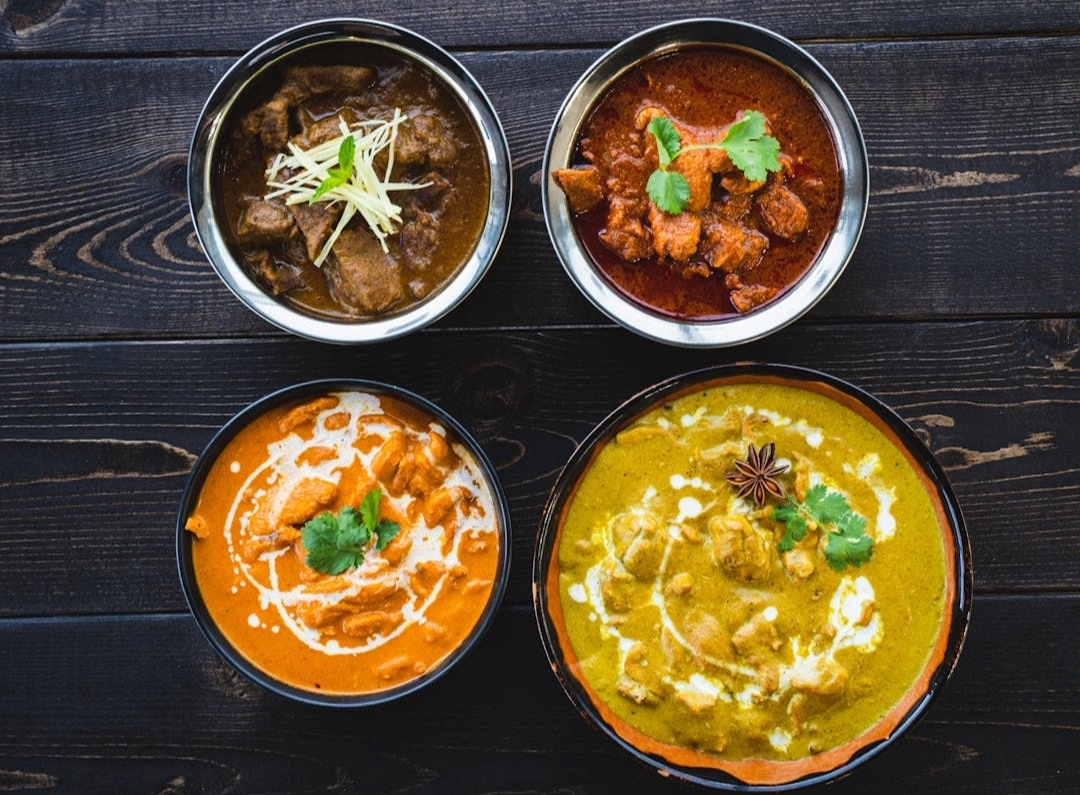Curry – it appears people either love it or can’t stand it. There are only a few folks who are only slightly interested. In the United Kingdom, curry dishes abound. Some buy curry dishes at restaurants and others have favorite recipes to make at home.
But there isn’t just one curry – the selection is eclectic and provides something for all taste buds. My emails traveled across Canada and England for some valuable tips and loves of the dish.
My friend Grace not only loves currying but loves the accompaniment also. She says, “I’m a big fan of lamb. And GIVE ME ALL THE NAAN PLEASE.” She doesn’t have a favorite curry, but loves almost all varieties. Grace lives in Montreal and does have favorite curry restaurants but is unsure The Sahib and The Taj would be available to people in other countries. She learned the love and makings of a good curry when she lived in the United Kingdom.
Phanaeng Curry appears to be a favorite and provides a thick texture and peanut flavor. The name relates to the word “panang,” which relates to “cross,” where the chicken will be placed upright and the legs are crossed. Generally made with meat, the ingredients in this curry, according to Taste Atlas, don’t include vegetables but can be made with beef, chicken, duck, or pork. Other ingredients include Panang curry powder, makrut lime, coconut milk, and palm sugar. The website includes a variety of curries and includes suggestions for serving with brown rice. However, naan bread appears universally as an accompaniment with all curries.
The website “Well Plated” by Erin Clarke shows Tofu Curry for its richness similar to meat-based dishes, but she states it “is healthier, prepared entirely with ingredients you can find at an average grocery store, and cooks up in a single pot.” She continues by explaining the “tomato curry sauce is a vibrant blend of spicier ingredients (curry and cumin) and warm flavors (coriander and cloves). The combination is marvelous.
What makes a curry taste like curry? The ingredients generally include combining ground and roasted coriander seeds, turmeric, cumin, and chili peppers with the essential ginger, which remains a half of the recipe of ginger garlic paste for most Indian recipes.
In England Erica says she will use her own meat with a good commercial sauce. She explained she’s made curry from scratch, but that tends to leave the house smelly and her family enjoys the mild curries including Butter chicken, Tikka Masala, which is tomatoey, and Lamb Rogan Josh which is also tomatoey. She serves the curry with rice, plain or pilau, and naan bread or paratha to accompany the curry. They may also add poppadom and dips.
My niece Beth Ann states, “I love curry.” She especially loves goat and coconut chicken curry. She started her love of the dish in college and says it wasn’t served at home when she was growing up.
My friend Diane loves curry and she’s both bought curry and made her own. Her likes tend to include red curries, but she didn’t eat the dish in her childhood. Her favorite is curry with rice and tofu.
“Food and Fabulous” states onions remains one of the most important curry ingredients for a delicious curry and they need to be fried until translucent or browned in olive oil. The website describes the other basic ingredients include “spices/herbs– some for heat (chili/masala/pepper) and some for depth of flavour (garam masala, cinnamon sticks, cardamom, curry leaves and fresh coriander) & others (turmeric, saffron).” “Tips for the Perfect Curry” explains the secrets include using fresh spices which are toasted, “blitz” the tomatoes, onions are important, don’t overcook the chicken, and add exciting toppings.
“All Recipes” shares a “go to” recipe for curry that begins with olive oil in a pan and onions sautéed until lightly browned. Stir for about two minutes and add garlic, curry powder, cinnamon, paprika, bay leaf, ginger, sugar, and salt. Next the chicken is added (or whatever meat or other ingredients one likes) with tomato paste, yogurt, and coconut milk. This mixture is brought to a boil, the heat is reduced and will be simmered for 20 to 25 minutes. The bay leaf is removed, and lemon juice and cayenne pepper are added; the mixture is simmered for five more minutes. Serve hot with whatever additions one desires.
From restaurants to your own kitchen, many varieties of curry are available for everyone and can be spicy hot or mild. We don’t eat curry in our house, but if offered at a restaurant, I will certainly indulge.
Her Nexx Chapter invites you to join our free Community where women from around the world are connecting with each other’s stories, exploring different experiences, and transforming ideas.
The Future of Connection for Women








0 Comments